ASSOCIATION (OR "CONCATENATION" OR "LINKAGE")
Up to now we have treated the Mendelian dihybrid (or polyhybrid) crossing assuming that the different allelic pairs are actually found on different homologous chromosome pairs. But the number of chromosomal pairs, although different from species to species, varies within narrow limits (few species reach around a hundred chromosomes), while the number of genes can be counted in the tens of thousands.
That the characters chosen by Mendel for his experiments segregated all independently (without therefore confusing the calculations in the distribution of phenotypes in the F2 of the polyhybrid cross) was a lucky chance. If two pairs of alleles were found on adjacent loci, the law that would follow would be called the law of association.
Knowing that very many characters have their locus on a single chromosome and that they are the chromosomal pairs that segregate independently in meiosis, it can well be understood how frequently it happens that two pairs of characters, if they were associated on a chromosome in the parental organism, remain associated. equally also in the gamete and therefore in the organism to which it will bring its own genetic material.
Thus we see that "association represents an" exception, far from infrequent, to the independence enunciated in Mendel's third law.
EXCHANGE OR "CROSSING-OVER" AND RECOMBINATION
Speaking of meiosis we have indicated that there are two different moments of mixing of the genetic material: one is that of the segregation of chromosomes in gametes, and that is the one observed by Mendel.
The other moment, which actually precedes, is the one in which the four chromatids of each pair of homologous chromosomes mutually exchange identical traits. Following this exchange, two factors that were associated on the same chromosome will instead be independent in the gametes. The probability that an exchange takes place is proportional, to a first approximation, to the length of the chromosome, and in longer chromosomes there can be even more than, an exchange.
The phenomenon can be detected cytologically, by observing a sufficient number of meioses under the microscope.
The re-match rate is the rate at which any two characters that were associated in the parental generation recombine differently in F2.
If the two loci are absolutely contiguous, the probability that a chiasm will separate them will be practically nil. The recombination rate will be: n ° recombinants. If two loci are on two different chromosomes, the recombination rate will be 0.5 (equal probability, for two characters that were joined in the P generation, to randomly find themselves together in F2). The recombination rate can therefore vary between 0.0 and 0.5. For small distances on the chromosome, the distance and the recombination rate are directly proportional. For longer distances there is the possibility that two exchanges take place between two loci. It will now appear clear that two factors separated by two exchanges become again associated. it is clear, at this point, that the proportionality between the distance of the loci and the probability of recombination is lost.
Loci found associated on the same chromosome constitute 'association groups'. Very distant loci may have such a probability of separation by exchange that they behave as independent, but each of them will be associated, with a lower recombination rate, to the intermediate loci.
When the rates of recombination between many pairs of genes within an association group are known, the construction of 'genetic maps' can begin. Keeping in mind that the distance between two genes (a and b) is expressed by the recombination rate and that the distance of a from a third gene c can be either the sum or the difference with respect to its distance from b, it is possible to reconstruct a map of the reciprocal distances, which will be the genetic map within that group of association, that is, of that chromosome.
We must now consider in general some concepts that limit the phenotypic manifestation of genotypic characters.
First of all we will talk about the concepts of penetrance and expressiveness, and then we will devote particular attention to the phenomena of regulation of gene action.
PENETRANCE
The penetrance of a gene represents its ability to manifest itself in the phenotype. The measurement of penetrance is carried out statistically, by counting the frequency of the phenotypes that show that character out of 100 genotypes that contain it. A trait with 0.7 penetrance is a trait that occurs phenotypically in 70% of its genotypic frequency.
EXPRESSIVITY
Expressivity is a quantitative assessment of the degree of phenotypic manifestation.
REGULATION OF GENE ACTION
Cells produce all their enzymes and proteins at the same speed and at the same time. Escherichia coli cells, for example, can be supplied with energy and carbon atoms from the lactose disaccharide as they are able to break them down into glucose and galactose thanks to the beta-galactosidase enzyme. In a normal E. coli that may have lactose, there are approximately 3 000 molecules of beta-galactosidase, equal to 3% of the proteins of that cell; in the absence of lactose there will be only one molecule of beta-galactosidase per bacterial cell. Galactosidase will be synthesized from new mRNA molecules when it can be used. Mutant strains of E. coli rich in the enzyme are known even when lactose is absent: these mutants are disadvantaged compared to normal cells as they are forced to an unnecessary consumption of energy and materials to produce the enzyme which will remain without substrate. Substances that cause an increase in the amount of enzyme, as is the case with lactose, will be called inducers, while enzymes will be said to be inducible. Other substances induce, also these in a specific way, the production of certain enzymes. Also in E. coli, for example, able to build all its amino acids, having carbon and ammonium (NH3), the presence in the culture medium of a particular amino acid (histidine, for example) blocks the production of all enzymes associated with the biosynthesis of the amino acid itself: it will be said of these enzymes that they are repressible. In bacterial cells the mRNA molecules are demolished shortly after their formation, and that is why controlling the production of mRNA means controlling the enzymatic synthesis at the same time .
THE OPERON
To explain how the bacterial cell is able to control its own production of enzymes Jacob and Monod formulated the hypothesis of the operon; the operon is formed by several genes that are functionally related and aligned without discontinuity along a stretch of DNA. The operon consists of three different types of genes: the promoter, where the formation of the mRNA begins; the operator, where control is exercised; one or more structural genes, which code for enzymes or for other proteins. In the beta-galactosidase system, the operon includes, in addition to that for beta-galactosidase, also two other genes structural coding for other enzymes involved in the metabolism of lactose. These genes are adjacent to each other and are transcribed one after the other along the same DNA helix into a single mRNA molecule. The mRNA molecules thus produced are active for a very short time, after which they are destroyed by specific enzymes. .
The operon's activity is in turn controlled by another gene, the regulator, which may also be distant from the operon: this regulator encodes a protein, called a repressor, which appears to bind to the DNA at the operator gene. Being the operator gene placed between the promoter and the structural genes actually blocks the production of mRNA.
The repressor in turn is controlled, and the control is carried out by means of a "signal" substance. In the case of inducible enzymes this substance is the "inducer. The inducer" binds to the repressor molecule modifying its shape so that it can no longer adapt to the DNA: in this case, since there is no repressor between the promoter and structural genes, the repressor can form the mRNA molecules and from these the protein molecules. With the exhaustion of the supply of inducer again the regulator will regain control, which will stop the production of new mRNA, therefore of new proteins. In the beta-galactosidase system the inducer is lactose or a substance very similar to this. derivative: they will join the repressor inactivating it so as to allow the biosynthesis of enzymes. In the case of repressible enzymes, the substance that acts as a "signal" acts as a corepressor: the repressor is active only if combined with the corepressor. In the histidine system, which involves a dozen different enzymes, it is this amino acid, joined to its tRNA, the corepressor. histidine.
ALLOSTERIC INTERACTIONS
Allosteric interactions, involving the inactivation of an enzyme by altering its shape, provide a different way of regulating the metabolic activity of a cell. Allosteric interactions allow for more accurate control than the inductor-repressor system of the operon, but do not achieve the useful result of excluding the biosynthesis of a given substance from the first stage - the production of an mRNA.
CONTROL SYSTEMS IN THE EUCARIUS
There are some facts that lead to believe that a system of regulation similar to the operon is operating and preeminent among plants and animals. The chromosomes of these organisms differ profoundly from those of E. coli and other prokaryotes. the control of the genes in these cells are very different. The mechanism of mitosis is such that each cell of a given plant or animal possesses all the information
genetics present in the fertilized egg. Therefore, most of the genes in any specialized cell will remain inefficient throughout the life of the cell. The DNA in these cells is always associated with proteins. So it is possible that gene repression in eukaryotes requires precisely this association between DNA and proteins.


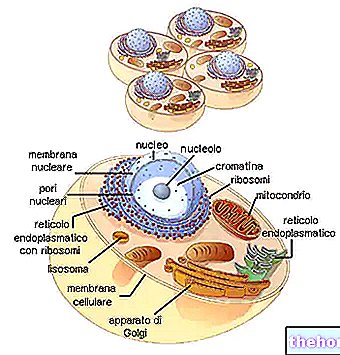
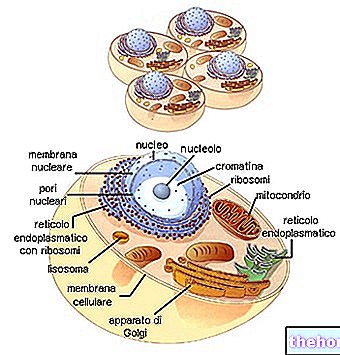
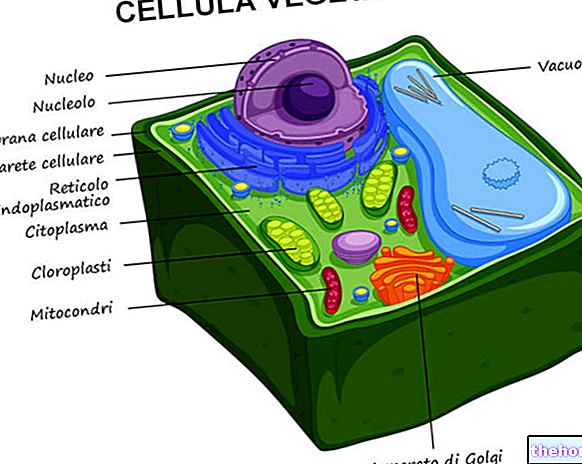
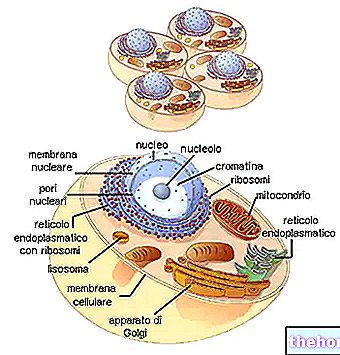
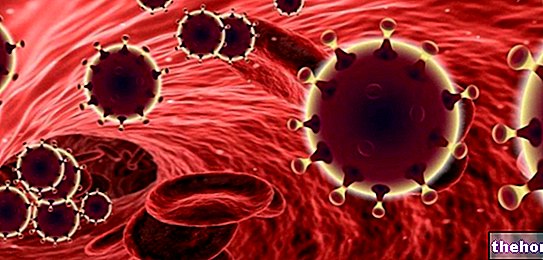









.jpg)











